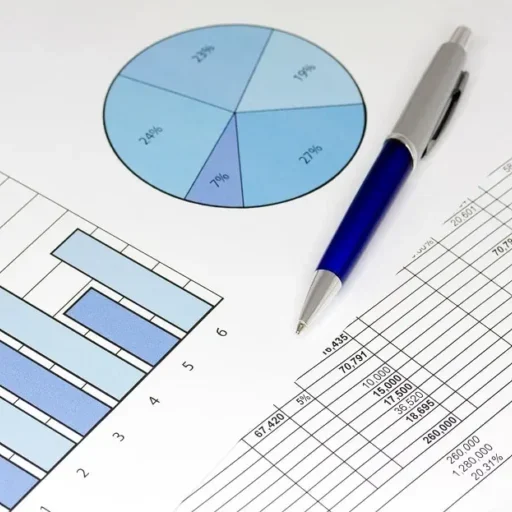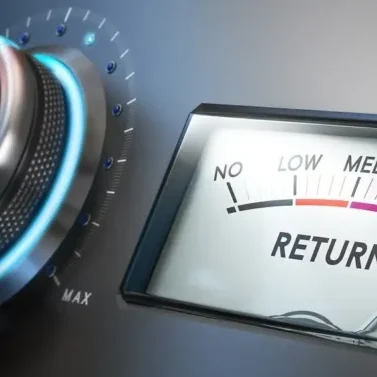How to Finance a Laundromat Purchase
Buying a coin-operated laundry is a popular option for first-time investors. Many laundromat acquisitions require lender financing to cover a large part of the cost. In this article, we discuss how to finance a laundromat acquisition. We cover:
- How are laundromats financed?
- What do lenders look for in a transaction?
- How are acquisitions structured?
- How much money do you need for the acquisition
1. How are laundromat acquisitions financed?
The majority of laundromat acquisitions qualify as small businesses. Most acquisitions cost less than a couple hundred thousand dollars and only a few top a million dollars. These acquisitions are usually financed using a combination of options that includes the following.
a) Buyers funds
Every acquisition requires that the buyer use some of their funds for the transaction. The buyer's contribution is often referred to as an equity injection. Most equity injections cover at least 10% of the project cost, though in some cases, it is higher.
We are not aware of any lender that finances 100% of a transaction.
b) Seller financing
Seller financing is a component in many acquisitions, though not a large one. Sellers would prefer to get paid immediately rather than wait for a part of their payment. However, buyers often demand seller financing because it shows the seller stands behind the laundromat. Most sellers offer financing at terms and rates that are comparable to market rates.
c) Small business administration (SBA)
Most small business acquisitions are funded using SBA-backed financing. Note that the SBA does not offer loans directly. Instead, the SBA provides guarantees to lenders that enable them to finance small business acquisitions. The maximum amount for an SBA-backed loan is $5,000,000.
The SBA's mission is to help small business owners finance their businesses. Consequently, their requirements are easier to meet than those of non-SBA loans. They are very common way to finance business acquisitions.
d) Banks / Lenders
Banks and private lenders also finance laundromat acquisitions. However, they are more challenging to obtain than non-SBA financing. They should be considered if your project does not qualify for SBA funding.
e) Private investors
Some acquisitions are also be financed using funds from friends, family, and investors. If you chose these options, consider working with an attorney to help you draw the appropriate agreements.
2. What do lenders look for in an acquisition?
In this section, we discuss how lenders evaluate a coin-operated laundry acquisition. As you will learn, lenders evaluate both the company and the buyer.
The lender's objective is to minimize their risk of losing money. Knowing how lenders evaluate opportunities helps you negotiate more effectively. It enables you to structure a transaction that has a higher likelihood of getting funded.
a) Can the laundromat afford to use financing?
From a lender's perspective, this is the most important transaction criteria. Lenders will only finance coin-operated laundry acquisitions that can afford to pay for financing out of its revenues. Consequently, the business needs to make enough money to afford financing.
b) Is the laundromat reasonably valued?
Financing an overvalued company is a significant risk for lenders. They look at the valuation of the business very carefully.
In the initial phase of the transaction, lenders want to ensure that the transaction has a 'reasonable' valuation. They use internal guidelines to make quick determinations. Once the transaction moves through the process, the lenders will ask for a professional valuation and appraisal.
According to the Business Reference Guide, laundromats are usually valued as follows:
- 3 - 5 times SDE
- 3 - 6 times EBIT
- 3 - 6 times EBITA
Lenders limit the amount of their loans based on the 'reasonable' valuation of the business. Buyers can still acquire companies that lenders considered overvalued. However, they will need to make up the difference between the loan and the company value by increasing their equity injection.
Note:
- SDE is Sellers Discretionary Earnings
- EBIT is Earnings Before Interest and Taxes
- EBITA is Earning Before Interest Taxes and Amortization
c) Buyers assets and equity injection
Every lender, including SBA-backed lenders, asks buyers to commit some of their funds to the transaction. This is known as an equity injection, though it is also referred to as a down payment. In most cases, the equity injection is for 10% of the transaction.
The equity injection is an important component of the transaction. Lenders will not finance a transaction where the buyer has not contributed some of their funds. It is just too risky since the buyers could easily walk away from the business if things don' go as planned.
The equity injection cannot be financed or come from the seller. It must come form the buyer or their partners. Learn more about equity injection sources.
d) Buyers credit score
Lenders look at the buyer's credit score as a component of the transaction. SBA-backed transactions have the most flexible requirements. They can work with buyers that have a minimum score of around 650. Non-SBA lenders usually require higher credit scores.
e) Does the buyer have industry experience?
The buyer must have experience in the industry, ideally managing a coin-operated laundromat. This industry has a lot of first-time buyers, and this requirement can present a challenge to them. Fortunately, this problem can easily be solved by hiring a current manager (or seller) for a period of time to help during the transition.
f) Is real estate included?
Laundromats depend on their location. This is the type of business that cannot be relocated. Consequently, lenders will not finance transactions where the location has not been secured for the loan period. You can accomplish this by negotiating a long-term lease or by acquiring the real estate that hosts the laundromat.
g) How old is the equipment?
The age of the washers and dryers is an important factor to consider in the transaction. Buyers need to consider how quickly they will need to replace the equipment and at what cost. In most cases, this is handled by getting additional financing for Capital Expenditure (CapEx) improvements.
h) Transaction size
Lenders have preferred transaction size ranges. They won't work with transactions that are outside their range regardless of how attractive the deal looks. In our case, we work with opportunities valued between $500,000 - $5,000,000.
3. How are purchases structured?
Must laundromat purchases try to maximize the use of financing. This is because most buyers don't have many resources to invest. Additionally, financing allows buyers to acquire larger companies.
Most laundromat acquisitions that use financing fall under the category of leveraged buyouts (LBOs). LBOs are well known in larger transactions but are very common in smaller acquisitions as well. LBOs enable buyers to finance up to 90% of the transaction.
Coin-operated laundry acquisitions are usually financed using a combination of the following three options:
- Buyers equity injection
- Seller financing
- SBA-backed loan
Most buyers plan their equity injection so that it covers 10% of the project cost. However, equity injections can be higher at times based on transaction details.
Seller financing covers 5% - 20% of the transaction. Sellers don't have a big incentive to offer a large amount of funding if their business is solid. The remaining amount is financed using an SBA-backed loan.
Most transactions require additional funding for cash flow and improvements. Improvements include enhancements to the location or buying additional equipment. These costs are referred to as Capital Expenditures (CapEx). Cash flow and CapEx requirements are usually added to the financing package. Learn more about "How to get a business acquisition loan."
4. How much money do you need to buy the business?
The first thing that most buyers consider in an acquisition is the size of their equity contribution. This determines the size of the acquisition.
Unfortunately, there is a lot of confusion regarding how to calculate the size of the equity injection. The equity injection is not calculated based on the loan size. It is calculated using the project cost, which includes:
- Business valuation
- Additional funds for CapEx (if any)
- Additional funds for cash flow (if any)
- Transaction closing costs
The equity injection is 10% of the costs listed above. To learn more, and see some examples, read "What is the cost of buying a business?"
Need to finance a laundromat acquisition?
The first step to work with us is to submit this form. Once we review it, one of our associates will contact you to discuss the specific details of your acquisition.
Editor's note:
This information should not be considered legal or financial advice. Given the complexity of business acquisitions, this document is not guaranteed to be 100% accurate or cover every potential option. However, we make every effort to provide you with the best information. If you have comments, suggestions, or improvements, contact us via LinkedIn.






